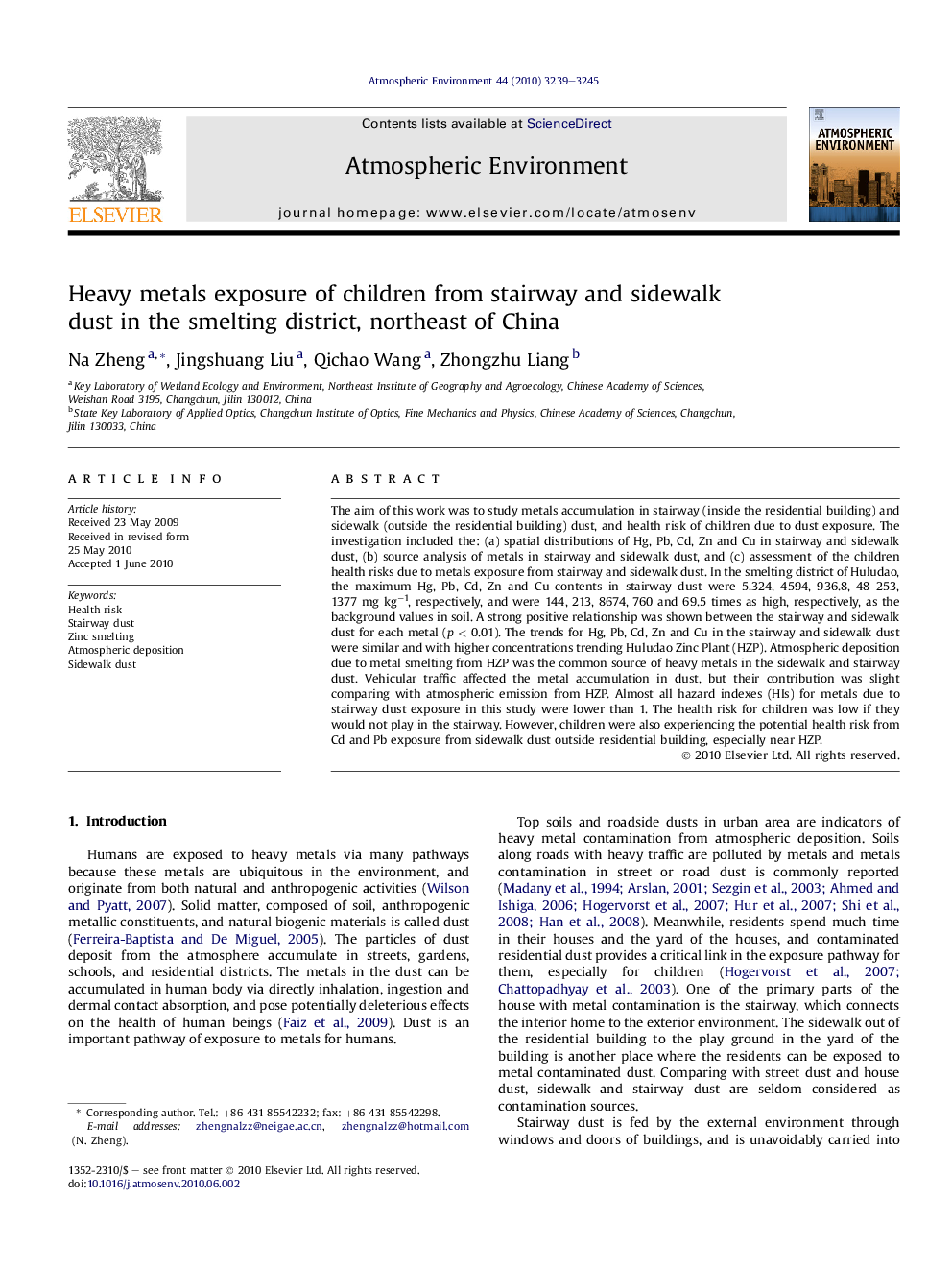| Article ID | Journal | Published Year | Pages | File Type |
|---|---|---|---|---|
| 4440669 | Atmospheric Environment | 2010 | 7 Pages |
The aim of this work was to study metals accumulation in stairway (inside the residential building) and sidewalk (outside the residential building) dust, and health risk of children due to dust exposure. The investigation included the: (a) spatial distributions of Hg, Pb, Cd, Zn and Cu in stairway and sidewalk dust, (b) source analysis of metals in stairway and sidewalk dust, and (c) assessment of the children health risks due to metals exposure from stairway and sidewalk dust. In the smelting district of Huludao, the maximum Hg, Pb, Cd, Zn and Cu contents in stairway dust were 5.324, 4594, 936.8, 48 253, 1377 mg kg−1, respectively, and were 144, 213, 8674, 760 and 69.5 times as high, respectively, as the background values in soil. A strong positive relationship was shown between the stairway and sidewalk dust for each metal (p < 0.01). The trends for Hg, Pb, Cd, Zn and Cu in the stairway and sidewalk dust were similar and with higher concentrations trending Huludao Zinc Plant (HZP). Atmospheric deposition due to metal smelting from HZP was the common source of heavy metals in the sidewalk and stairway dust. Vehicular traffic affected the metal accumulation in dust, but their contribution was slight comparing with atmospheric emission from HZP. Almost all hazard indexes (HIs) for metals due to stairway dust exposure in this study were lower than 1. The health risk for children was low if they would not play in the stairway. However, children were also experiencing the potential health risk from Cd and Pb exposure from sidewalk dust outside residential building, especially near HZP.
